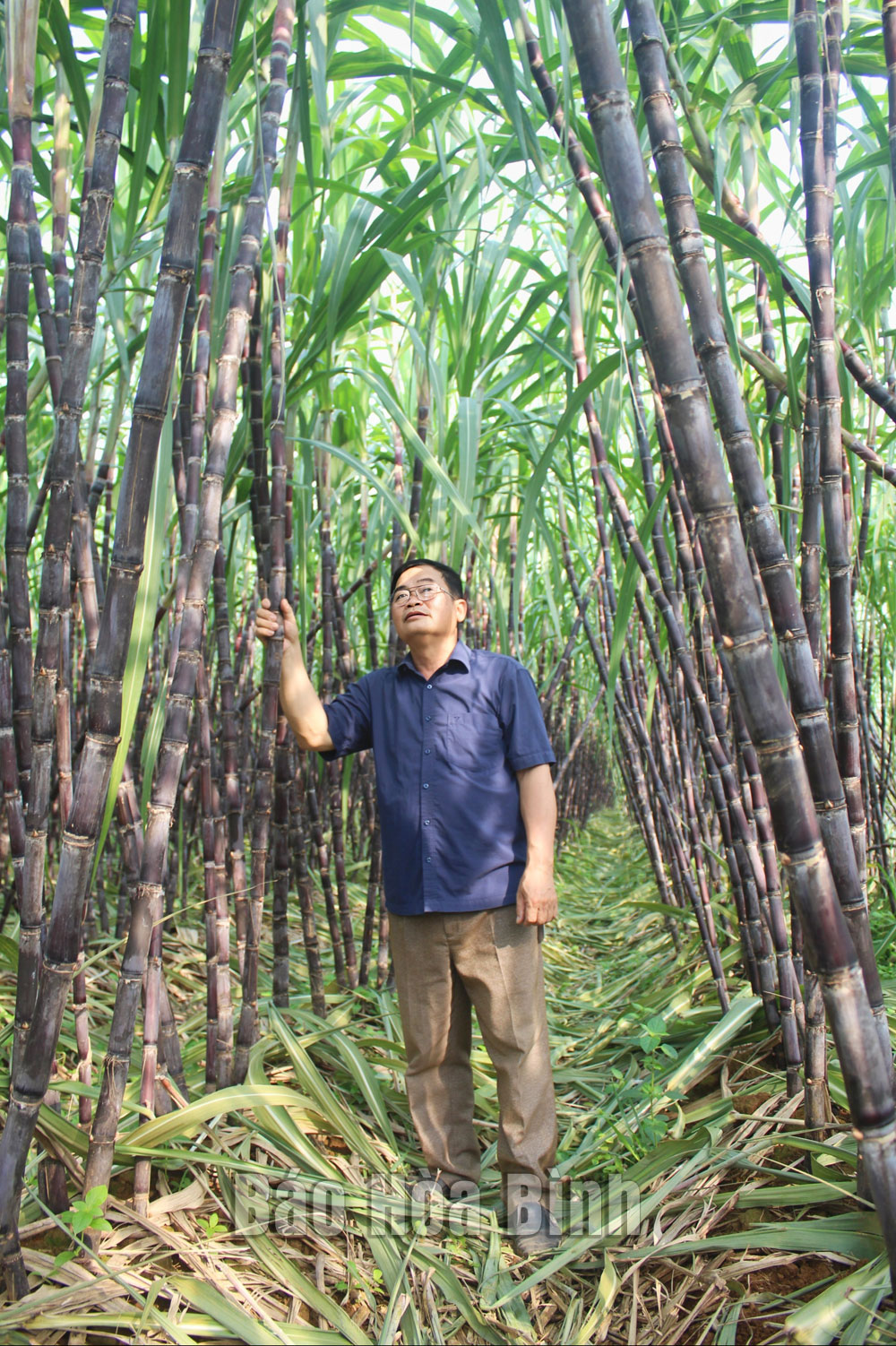
(HBO) – Merchants have placed orders for many sugarcane farms in My Hoa commune in Hoa Binh province's Tan Lac district, with prices ranging from 9,000-10,000 VND a tree, considered high as compared with that over the past years. This is a rosy signal for local sugarcane farmers.
Merchants have placed orders for many sugarcane farms in My Hoa
commune, Tan Lac district, with prices ranging from 9,000-10,000 VND a tree.
Previously, purple sugarcane farming had driven
economic development in My Hoa commune, with the total area amounting to
hundreds of hectares. However, the unstable consumption market has prompted
many households to shift to other crops.
Dinh Long Duong in Chu Bua hamlet is one of the
farmers who have maintained sugarcane cultivation for years. He established
Tung Duong agricultural cooperative in 2019 with 17 members, aiming to maintain
and develop sugarcane farming. With 21 hectares of sugarcane, the cooperative
has helped its members adopt new sugarcane farming methods.
After encountering a range of difficulties in
the two years of COVID-19, the cooperative’s members have begun to earn profits
as each sugarcane tree was sold at a price of 6,000 VND in the last crop.
Duong’s family alone has 5,000 sq.m of sugarcane
farming, which brought about more than 100 million USD in the crop.
Duong said thanks to new farming methods,
sugarcane quality has been improved, adding that deposits have been made for 10
hectares, with prices from 9,000-10,000 VND a tree.
Bui Hoang Long in Don hamlet is one of the first
cooperative member who have sold sugarcane this crop. Long earned nearly 200
million VND from over 1 hectares of sugarcane last year, equivalent to the
money he got after selling half of his sugarcane trees this year.
With the largest area of sugarcane, 1.8
hectares, Bui Van Nhat in Don hamlet expects to earn from 400-500 million VND
this year.
Duong said his cooperative aims to bring
sugarcane to supermarkets and even export the product in the future.
However, it is hard to produce sugarcane that
meets export standards, he said, adding that local farmers hope to receive more
support from agencies to maintain sources of varieties and adopt organic
sugarcane farming methods.
According to the provincial Department of
Agriculture and Rural Development, Hoa Binh has 7,150 hectares of sugarcane,
and the province has shipped 100 tonnes of sugarcane to the EU and the Republic
of Korea (RoK) so far./.
Mai Chau district has firmly established itself as a standout destination on Vietnam’s tourism map, attracting both domestic and international visitors with its breathtaking landscapes, rich ethnic culture, and warm hospitality. However, beyond its natural and cultural charm, a secure and well-managed tourism environment has added to Mai Chau’s appeal.
As Vietnam enters a new phase of economic and administrative reform in 2025, Hoa Binh province is stepping up its efforts to streamline governance, boost economic growth, and attract investment.
The Hoa Binh provincial People's Committee held its monthly meeting on March 26 to review the progress of key projects, assess budget revenue and public investment disbursement, provide feedback on draft documents for submission to the provincial Party Committee's Standing Board, and discuss other important matters related to the committee's governance activities.
Playing a key role in Hoa Binh province’s economic development, Luong Son district has been focusing on science and technology development, innovation, and digital transformation.
Identifying the application of online public services as a key step in administrative procedure reform and e-government building, Kim Boi district has proactively provided services and supported residents and businesses in accessing and utilising full-process online public services promptly and efficiently. The locality aims to lift the rate of end-to-end online public services to over 90%, with all officials and civil servants handling tasks in the digital environment.
Nguyen Anh Tuyet, hailing from a family steeped in the ancient art of herbal medicine, is transforming local medicinal herbs into high-value concentrated extracts, elevating their worth and healing potential.



